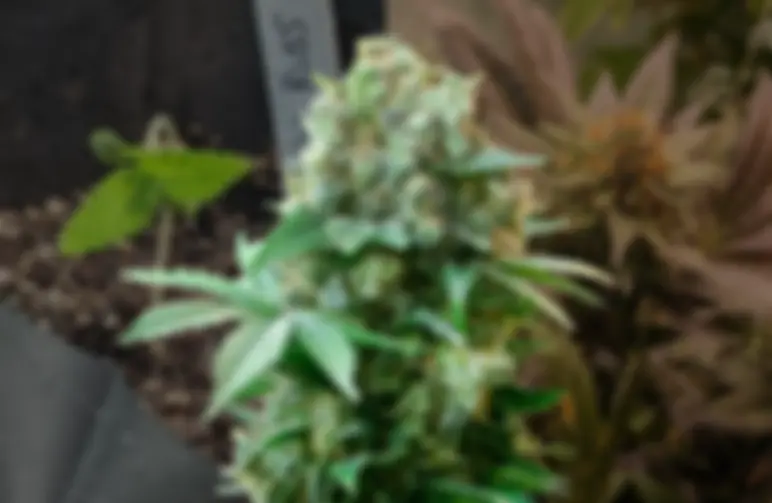Willstang has a history of over 60 grows, and he was ready for just another one. He favored our White Russian strain, a classic crossing of White Widow and AK-47, we are very pleased with his choice, and his results during this grow.
Wilstang's Grow Setup
Here's some essential information about the grow setup, such as the number of plants cultivated, the dimensions of the grow tent, and additional details.
| Strain | White Russian by WeedSeedsExpress |
| Number of Plants Grown | 1 |
| Light cycle | 18/6 hours, from week 13, switched to 11/13 hours |
| Medium | Perlite |
| Nutrients used | Mammoth P, Dechlorinator +, Organic Photosynthesis Plus, Liquid Squid Fertilizer |
| Seed to harvest time | 21 weeks |
| Veg time | 12 weeks |
| Flowering time | 9 weeks |
| Germination method | Paper towel method |
Grow Diary
Germinating White Russian seeds
Willstang opted for the tried-and-true paper towel method, a favorite among many growers. The seeds were placed between moist paper towels and kept in a dark, warm place. Consistent moisture and temperature are crucial in this phase.
Willstang's expertise is evident. The germination was perfect, achieving a 100% success rate. One seed was planted, and one seed sprouted, ready to begin its journey.
Willstang's attention to detail during germination sets the stage for a promising grow. The paper towel method continues to be a cornerstone of success, ensuring healthy seedlings from the outset.
Weeks 1 and 2
Willstang closely monitored the White Russian seedling in the first week. The lights were on for 18 hours daily, and temperatures were 24 °C day and 21 °C night, with 70% humidity.
A nutrient mix of Mammoth P, Dechlorinator +, Organic Photosynthesis Plus, and Liquid Squid Fertilizer was used at 11.36 ml/gal, ensuring healthy early growth.
In the second week, Willstang kept conditions stable. The consistent temp and humidity fostered a strong root system, and the 18-hour light schedule continued.
No changes were made to nutrients, as the initial mix worked well. The plant showed healthy, steady growth.
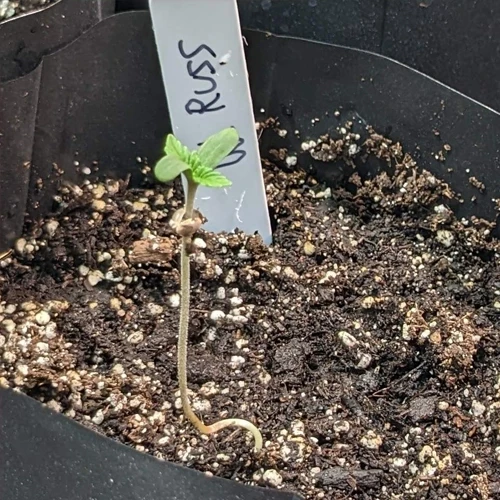
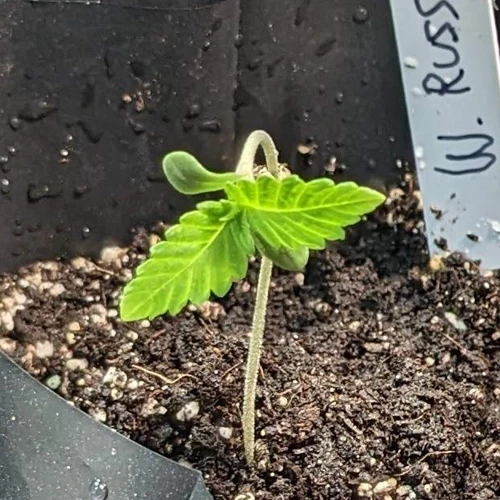
Weeks 3 and 4
By week three, the White Russian was in the vegetative stage. Willstang maintained an 18-hour light schedule, stable temperatures (24 °C day, 21 °C night), and 70% humidity.
The same nutrient mix (Mammoth P, Dechlorinator +, Organic Photosynthesis Plus, Liquid Squid Fertilizer) was used. The plant grew well with vibrant leaves and expanding roots.
Conditions remained steady in the fourth week. The White Russian thrived under the 18-hour light cycle, with consistent temperatures and humidity. The nutrient mix stayed the same, fostering a strong stem and broad leaves.
By week four's end, the plant showed robust growth, thanks to Willstang's careful care.
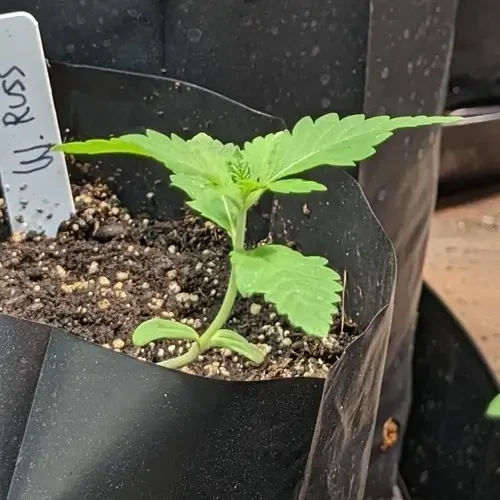
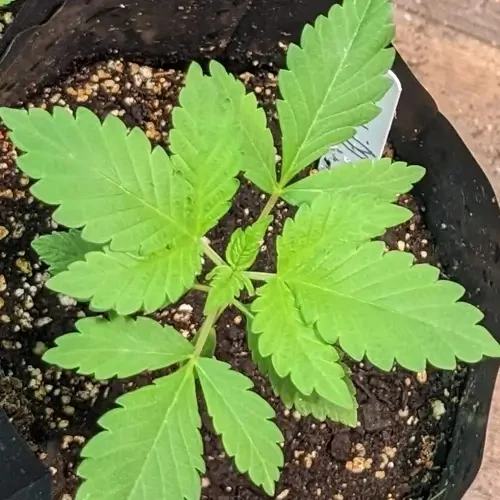
Weeks 5 and 6
In week five, Willstang kept the 18-hour light schedule, 24 °C and 21 °C night temps, and 70% humidity. The nutrient mix remained unchanged.
Willstang used the topping technique to encourage bushier growth and more bud sites.
The plant responded well, with robust new growth from the topped areas.
In week six, Willstang maintained the same environment and nutrient regimen. The topping was done again to promote lateral growth, resulting in a strong, bushy canopy.
By the week's end, the White Russian was thriving and well-prepared for the transition to flowering thanks to Willstang's careful care.
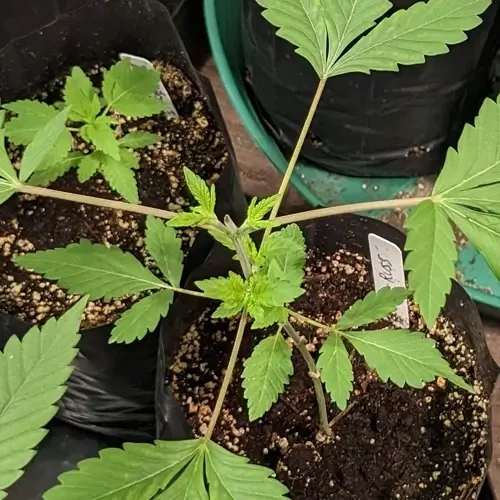
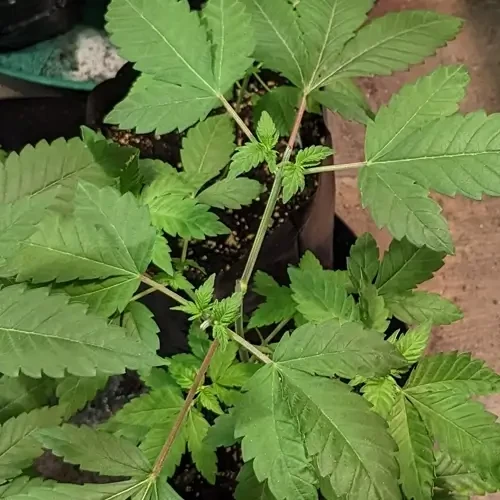
Weeks 7 and 8
In week seven, Willstang maintained the 18-hour light schedule, with temperatures at 24 °C day and 21 °C night and 70% humidity. The nutrient mix remained the same.
However, the pot size was increased to 56.78 liters, giving the roots more room.
The topping was applied again to encourage bushy growth and more bud sites. The plant showed lush growth and a healthy canopy.
In week eight, conditions remained consistent: 18-hour light, stable temperatures, and 70% humidity. The nutrient mix remained unchanged. The topping was used again to reinforce the plant's structure.
The White Russian flourished, well-prepared for flowering with a strong structure and ample root space.
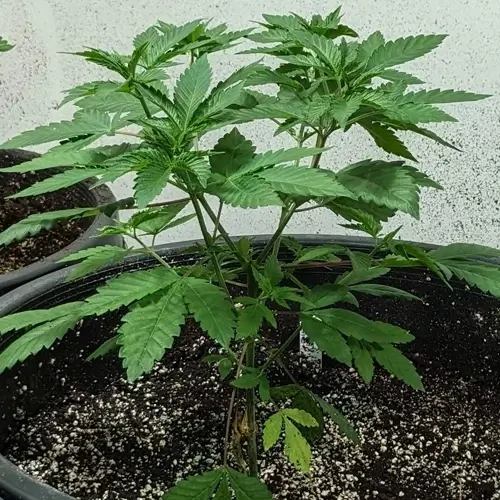
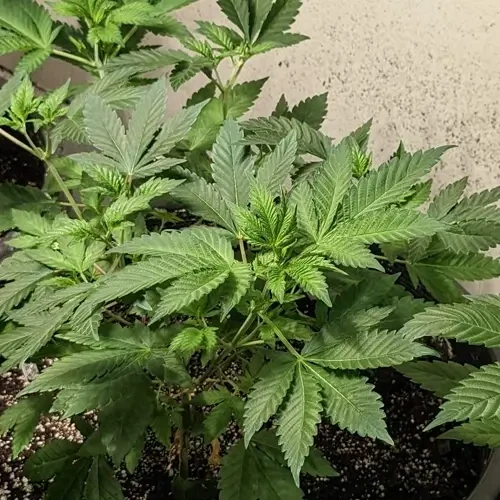
Weeks 9 and 10
In week nine, the White Russian stayed in the vegetative stage with an 18-hour light schedule. Temps were 24 °C day, 21 °C night, with 70% humidity. The 56.78-liter pot allowed for ample root expansion.
The nutrient mix remained the same, and topping was used again, promoting a bushy structure. The plant thrived, showing vigorous growth and a healthy canopy.
In week ten, the environment remained consistent: an 18-hour light cycle, steady temperatures, and 70% humidity. The nutrient regimen and topping technique remained unchanged, fostering a robust, bushy structure.
The White Russian showed readiness for flowering, with strong branches and lush foliage, well-prepared for the next growth phase.
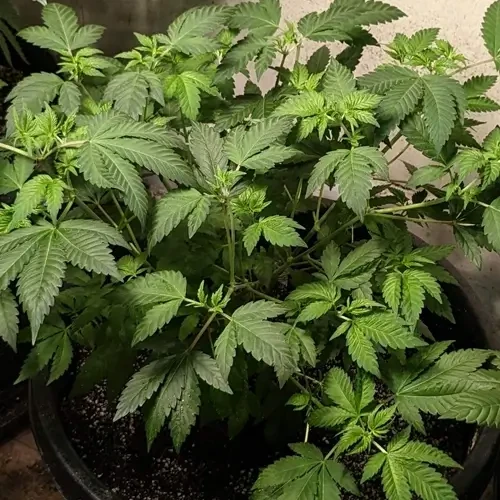
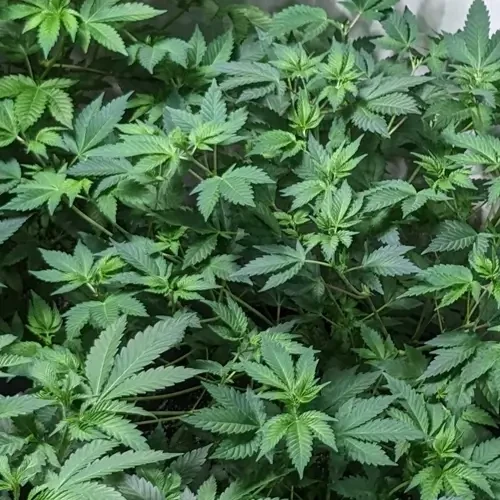
Weeks 11 and 12
In week eleven, the White Russian stayed in the vegetative phase with an 18-hour light schedule. The temperature was 24 °C day and 21 °C night, with 70% humidity. The large 56.78-liter pot allowed the roots to thrive.
The nutrient mix remained the same, and the topping was used again. The plant showed vigorous growth and a dense canopy.
In week twelve, conditions stayed consistent: 18-hour light cycle, steady temperatures, and 70% humidity. The nutrient regimen and topping technique were unchanged.
The White Russian displayed robust growth with a well-developed canopy and strong branches, and it was well-prepared for the flowering stage.
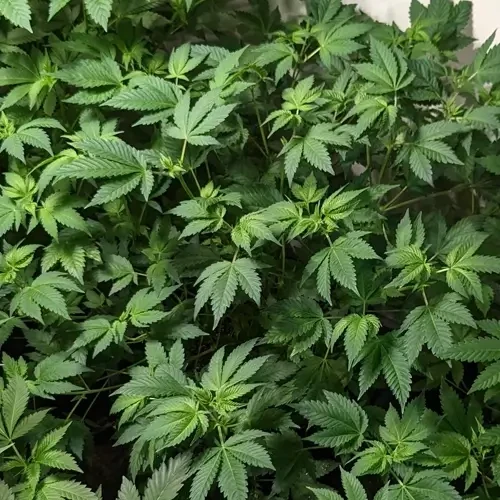
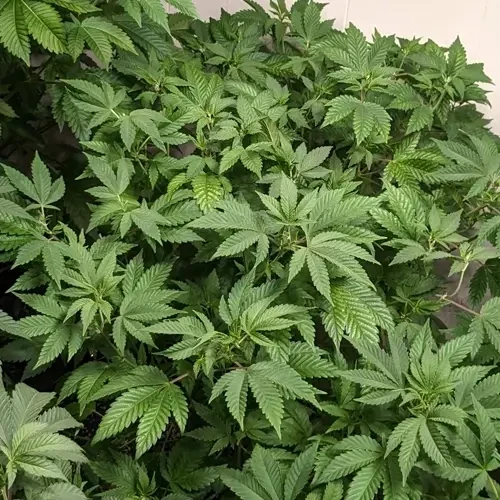
Weeks 13 and 14
In week thirteen, the White Russian entered the flowering phase. To encourage bud production, Willstang adjusted the light schedule to 11 hours. Temperatures remained at 24 °C day and 21 °C night, with 70% humidity.
The nutrient mix remained unchanged. Defoliation was introduced, removing lower leaves to improve air circulation and light penetration. The plant responded well, showing early bud development.
The flowering phase progressed in week fourteen. The 11-hour light schedule and stable temperatures (24 °C day, 21 °C night) continued. Humidity stayed at 70%.
The nutrient mix and defoliation routine remained consistent.
Thanks to Willstang's careful management, the White Russian showed significant bud formation and focused energy on producing healthy flowers.
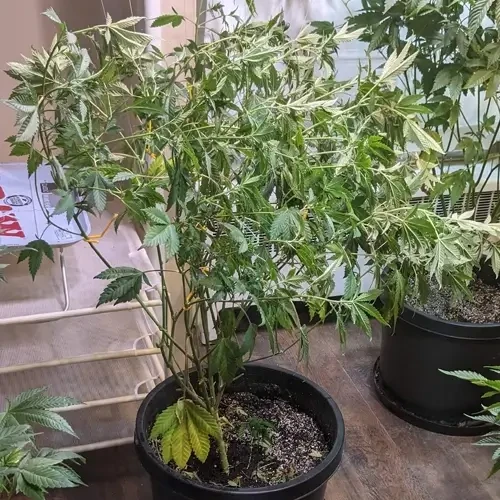
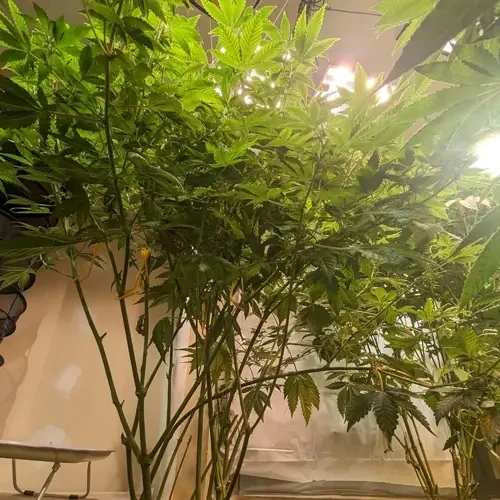
Weeks 15 and 16
In week fifteen, the White Russian continued flowering under an 11-hour light schedule. Willstang kept the temperatures at 24 °C day and 21 °C night, with 70% humidity. The nutrient mix stayed the same, supporting the plant's needs.
Defoliation was continued for better light and airflow. Buds grew denser and more defined, with a weak but noticeable smell.
In week sixteen, the plant was deep into flowering, maintaining the 11-hour light schedule and steady temps. Humidity remained at 70%. The nutrient regimen and pH levels stayed consistent.
Defoliation ensured lower buds got light and air.
The bud development was significant, with pronounced trichomes. The White Russian was on track for a successful harvest, showing healthy, resinous buds.
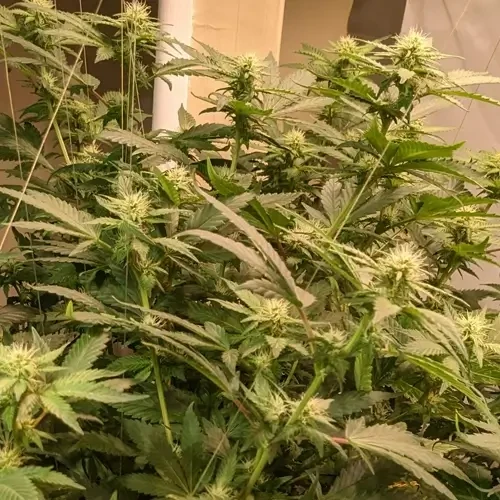
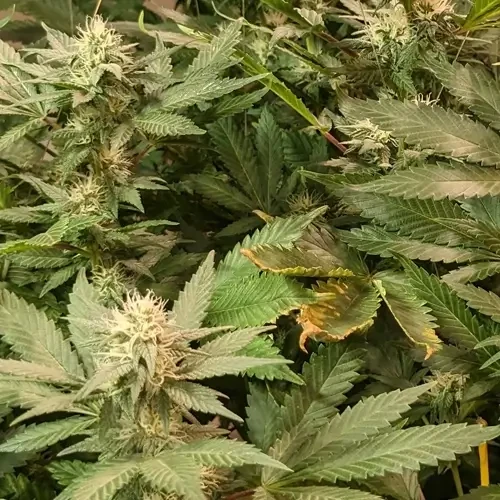
Weeks 17 and 18
In week seventeen, the White Russian continued flowering under an 11-hour light schedule. Willstang kept temps at 24 °C day and 21 °C night, with 70% humidity. The plant's smell was more noticeable, indicating healthy progress.
The nutrient mix and pH levels stayed consistent. Defoliation improved light and air circulation. The buds grew denser, with prominent trichomes and resin.
In week eighteen, the White Russian maintained its 11-hour light schedule, steady temperatures, and 70% humidity. The smell grew stronger, indicating robust bud development.
The nutrient regimen and pH remained unchanged. Defoliation ensured optimal light and air for buds.
The plant made substantial progress, with dense, resinous buds ready for harvest. Thanks to Willstang's consistent care, the White Russian was well-prepared for a successful harvest by the end.
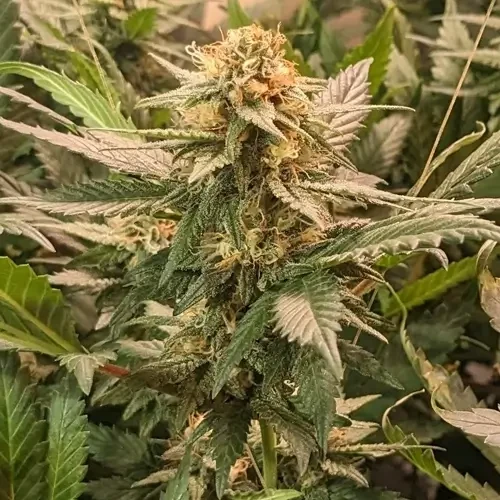
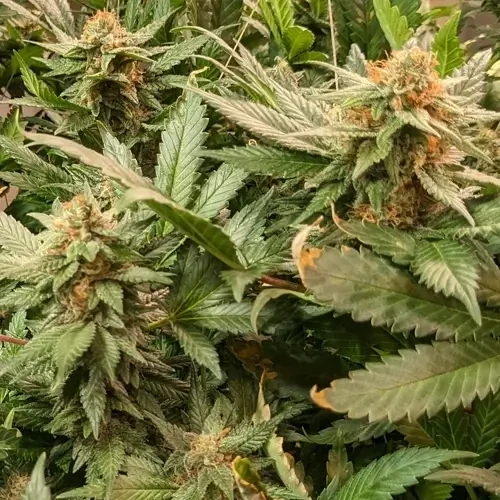
Weeks 19 and 20
In week nineteen, the White Russian continued flowering with an 11-hour light schedule. Willstang kept temperatures at 24 °C day and 21 °C night, with 70% humidity. The plant's aroma was strong, and mature buds were visible.
The nutrient mix and pH levels remained consistent. Defoliation ensured that light and air reached the buds. Resin production was significant, and the buds were dense and aromatic.
By week twenty, the White Russian was nearing harvest. The light schedule remained at 11 hours, with stable temperatures and 70% humidity. The smell was rich and potent.
The nutrient regimen and pH stayed consistent. Defoliation maximized light and airflow.
The buds were fully developed, covered in trichomes, and ready for harvest. Willstang’s care ensured a successful grow cycle, ending with dense, resinous buds ready for a rewarding yield.
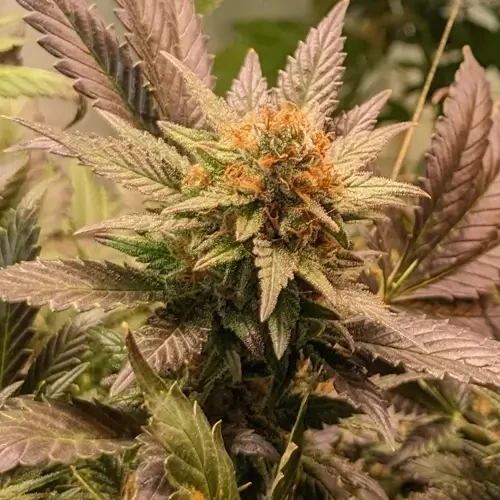
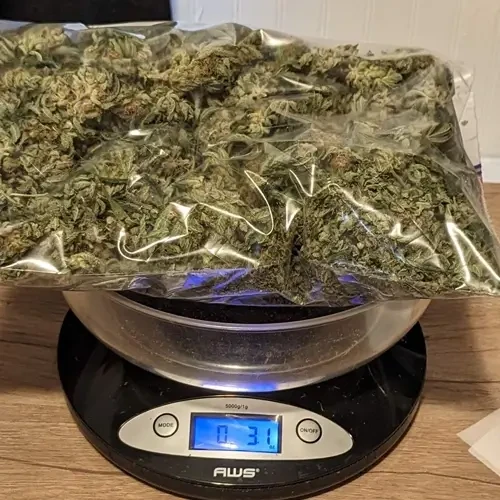
White Russian Ready to Harvest
After twenty weeks of careful cultivation, Willstang reached the long-awaited harvest of the White Russian feminized plant. The final week saw the culmination of meticulous care and expert techniques, resulting in a successful yield.
What’s on the Scales?
Bud Dry Weight: 88 gram
Number of Plants Harvested: 1
Yield Efficiency:
[0.14:gr] per watt
88 grams per plant
The single White Russian plant yielded a solid 88 gram of dry bud, demonstrating the effectiveness of Willstang's growing methods. The plant, nurtured through each stage with precision, produced high-quality buds rich in aroma and resin.
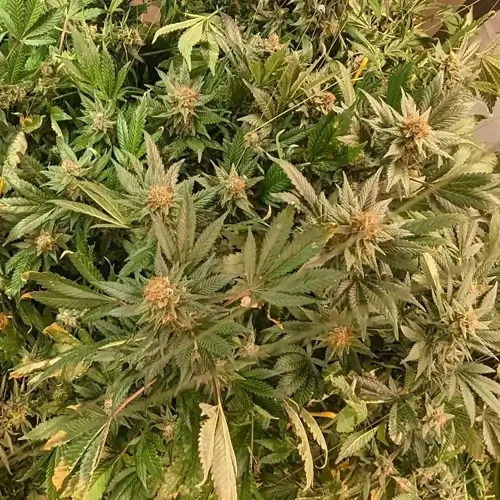
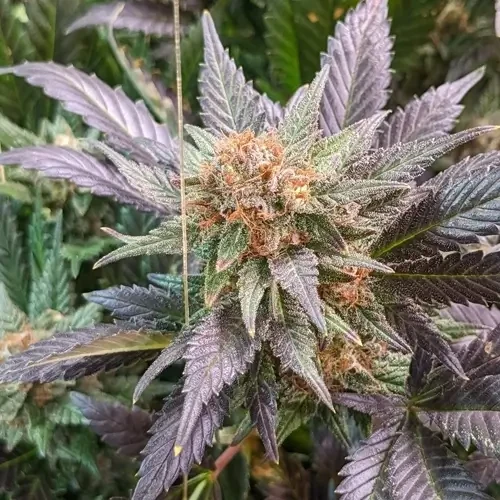
Willstang’s consistent environment control, strategic topping, and regular defoliation contributed to a robust harvest.
The outcome reflects the dedication and expertise applied throughout the grow, resulting in a satisfying yield of potent, well-developed buds.
This harvest not only underscores the success of this particular grow but also adds to Willstang's extensive experience and track record of over 60 successful grows.
White Russian: Final Result and Strain Review
| Yield: | 3.1 ounce / 88 grams per plant |
| Growing Review | A rewarding strain that needs attention and patience. |
| Smoke Report | Smooth and earthy flavor with notes of pine and citrus, leaving a subtle sweet aftertaste. |
Ready to get these results? Buy White Russian Seeds Here
